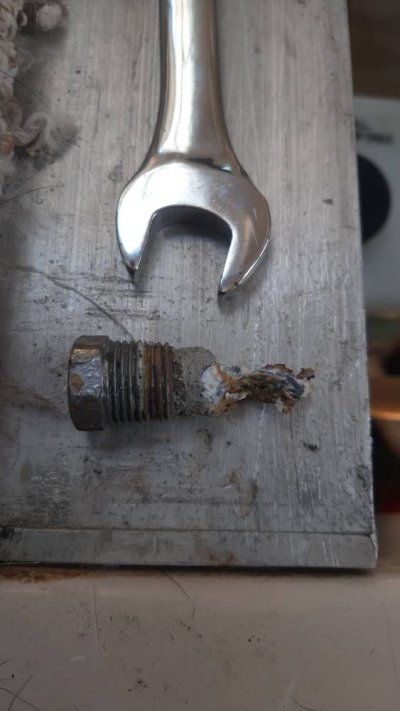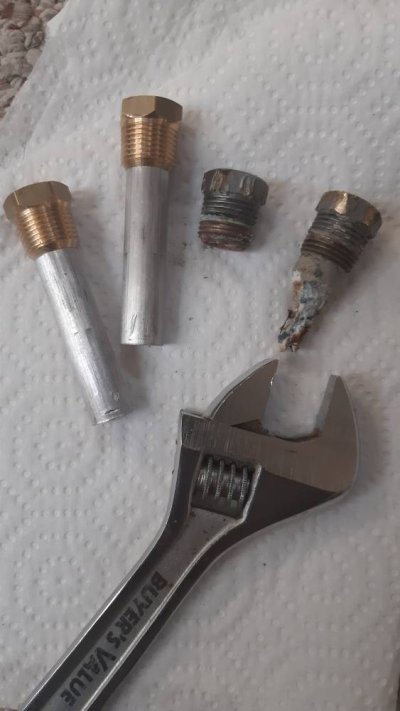Dave
I'm in fresh water and use all alum anodes as I couldn't find everything needed in Mg.
I have switched to Performance Metals pencil anodes for several reasons. They have a great selection of both bare anodes and complete units. Their pencil anodes have a steel rod/wire in the center that helps prevent breakage and need to fish out broken pieces.
I have build a "kit" box of all my anodes w both rods and complete units. I'll clean up old caps with muriatic acid and replenish the kit as needed to keep both on hand. A listing of which ones fit each Ht XChgr taped inside the cover avoids any questions.I have never used or needed teflon tape to seal but do use a LITTLE dab of anti-seize on pencil anodes to make removal EZ. So far no issue getting conductivity.
A couple other tricks I have found useful...
The threads of the cap and rod are about the same L and did not allow threading into the rod w/o catching the cap threads. I have taken an old hex cap and ground the threads down so it will screw onto an anode left in place but not into the Ht XChgr. That let's me continue to "tighten" and rotate the anode and pull it out with pliers or vise grips.
Where the Ht XChgr opening is very close to the pencil anode beyond the threaded cap I have painted a ring around the alum rod for a short ways. The rest of the rod is clean and works to protect but that ring is less affected and seems to come out without issue. Checking, cleaning and reinstalling more often will do the same.


